Papers by Craig San Roque
Routledge eBooks, Dec 10, 2023
Routledge eBooks, Dec 10, 2023
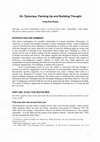
PAN: Philosophy Activism Nature, 2009
Old man, you listen! Something is there; we do not know what: "Something." Like engine, like powe... more Old man, you listen! Something is there; we do not know what: "Something." Like engine, like power, plenty of power; it does hard work: it pushes. 1 The capacity of a person to be a psychoanalyst rests upon his or her grasp of theory and aptitude for observational technique in the fieldwork of the psyche, as well as the capability to dwell enough in the "main thing" marked so definitively by Freud as that bittersweet activity generated between persons. The psychoanalyst must be willing to deal with the strange substances that shake one's being when two or three are gathered together in a way that enables matter from that famous "unconscious" to emerge in bits, groans, and halfformed misunderstandings-to emerge in any shape, from anywhere along the spectrum of love to hate, beauty to terror, self-knowledge to self-delusion. This matter can be developed further if I slow things down and ask, "Who are these two or three who sit together?" And I am thinking now, remembering occasions sitting in the company of older men-the sort of older men with whom anthropologists often have conversations. Older dark-skinned men who have custodial functions for their specific languages and a cultural obligation. Older men who smell of embedded smoke and kangaroo grease and maybe Log Cabin tobacco. And the question might be, "What is in our minds as we sit together, you and I?" with the fire simmering, tea stewing, ants busy on the sand, and maybe the heat of coals drifting through the shade of a mulga tree. These settings are fitting for reflective conversations between men of two worlds-Indigenous Warlpiri, perhaps, and the travelling Caucasian. Such conversations take place on the edges of campsites, on the edges of settlements, on the edges of and between dreams, between times, between languages, a shimmering, dusty place where nothing much is really what it seems. And nothing spoken is exactly what it might mean and nothing heard is quite what is intended, perhaps. Ambiguous answers and ambiguous tracks of thought are exchanged between persons in exactly the settings where transference phenomena might readily be found, if Freud or Jung had time enough and the chance to sit there long enough-learning, letting go of anticipation, observing the flow of desire and projection. Seated between the eyes of two worlds. That sort of thing. And thus another question arises about what emerges from somewhere between a different pair of men, not an Austrian Jewish doctor and a Swiss Protestant psychiatrist, both speaking German, seeking forms of feeling, edges of image, flurries of body sensation, legs, gut, heart, throat, headache , squinting eyes, nods, moving two minds so differently formed, hunching into conscious enough conversation, seeking to listen. No, not these two, but, let us say, a Warlpiri or Pintubi man, speaking Warlpiri, Pintubi languages and a half-formed English, and maybe a psychiatrist or anthropologist or a lawyer or police prosecutor, the two of them sitting there wondering about a mutual problem: an act of drunken assault, the suicide of a petrol-sniffing boy, the mutilated body of a woman in the creek bed, a traditional man so senseless with sweet white wine that he blurts out age-old secrets in bad company and ought to be speared for it. And if the spear is cast, the men who mete out the sanctioned, traditional punishment will be imprisoned for assault or maybe manslaughter. And they may deserve to be, if they carried out the penalty while drunk or lost their reason while doing it. Irreconcilable parallel laws, cognitive dissonance, daily bread. Myself, I have sat in many such conversations, the ants busy, the fire dimmed by psychic pain, on a cold concrete floor, dull with ash and grease, supporting so many suchlike conversations, a hundred times, somewhere between two worlds. In the overlap of intercultural conversation, things arrive, if we take the trouble to create between us a "location for cultural experience" 4 and accept that what might arrive will be perplexity, compassion, humour, irony, whimsical desire, flights of ideas, confusion, resolution-or nothing much
Berghahn Books, Dec 31, 2022
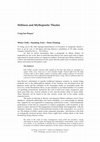
To bring you to the Alice Springs performances of Persephone as ontopoetic theatre, I have to go ... more To bring you to the Alice Springs performances of Persephone as ontopoetic theatre, I have to go by way of old Japan and Jane Barrow's installation of 50 white ceramic columns, named by her as-The Stillness. So, first an artist's description, then a paragraph on Shinto shrines, an inspiration for her work. Bear in mind that Jane Barrow has spent much time in Japan apprenticed to master potters of a Japanese tradition. Drawing upon Shinto ambience is a direct and embodied experience for her, given that she spent years of arduous manual labour and ardour for the potter's craft: The Stillness Fifty hollow ceramic columns softly tapered at the base and necks are arranged in a square white room. Some rise to near shoulder height. Natural light from the high windows falls on their chalky surfaces, revealing subtle, random patterns of concentric circles that have been rubbed back through the layers of slip. There is sufficient space for a person to move carefully between them. 2
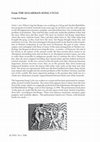
When Craig San Roque was working on a Drug and Alcohol Rehabilitation program in Central Australi... more When Craig San Roque was working on a Drug and Alcohol Rehabilitation program in Central Australia some years ago, he sat down one day with a group of old Aboriginal men around a campfire, and asked them how they would tackle the problem of alcoholism. They told him they could only tackle this problem if they had the story. What story did they mean? The story for alcohol. San Roque asked them where the story could be found. They said they didn't have it. The white fellas had brought the grog, so they must have the story. San Roque thought about this, and realized it was true. The story belonged to the great myth cycles that lie at the foundation of Western civilization. It was the story of Dionysus, the god of wine, whose origins were entangled with those of many of the main protagonists of Western mythology. San Roque set about recovering the story-or stories-of Dionysus' life and of his travels to all corners of the ancient world. He then rewrote these stories in an Aboriginal storytelling style and set them in an Aboriginal narrative space, not only to make them accessible to indigenous people, but to continue the story: Dionysus has, after all, never stopped travelling since ancient times and has indeed arrived in Central Australia. In the new version of the old myth cycle then, Dionysus becomes Sugarman, Kronos becomes Crow, they sit on the ground, they drive beaten-up kingswood holdens across the desert with 4-litre wine casks on the back seat, they hunt. The stories are repossessed. With new life thus breathed into them, these stories may indeed offer insight into the alcohol problems of the Northern Territory (and the rest of the world!). But more important perhaps is the promise they hold out of a whole new dimension of poetic rapprochement between black and white Australia.
Law Text Culture, 2006
In central Australian languages the words for 'thinking' and 'understanding' are the words for 'l... more In central Australian languages the words for 'thinking' and 'understanding' are the words for 'listening' and 'hearing'. The root verb, kulini (Pitjantjatjatjara) leads to kulinara palyani; 'to plan or work out how to do something'. This is what we are doing here; looking at these paintings; trying to 'get the picture' and attending to what the pictures reveal.

Journal of Analytical Psychology, Oct 11, 2018
I begin with the film Human Flow by Ai Wei Wei, the Chinese artist, activist and film-maker known... more I begin with the film Human Flow by Ai Wei Wei, the Chinese artist, activist and film-maker known for his extraordinary large-scale art works and installations. Then I take up the Australian film, Sweet Country by Warwick Thornton, bringing the theme around to the indigenous areas of Central Australia and the existential challenges facing Aboriginal Australians and professionals involved in the complex circumstances of a region falling into anomie/no law. Human Flow will no doubt be known to many who read this journal. The 2017 documentary is an account of the movement of the 65 million people around the world who have been forced from their homes to escape famine, climate change and war in the greatest human displacement since World War II, a movement taking place now. Ai Wei Wei's team gathers visual accounts from twenty-three smitten lands including Afghanistan,
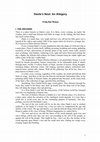
PAN: Philosophy Activism Nature, 2009
I. THE ORCHARD There is a place known as Dante's nest. It is there, every evening, no matter the ... more I. THE ORCHARD There is a place known as Dante's nest. It is there, every evening, no matter the weather, that a small and delicate bird folds its wings. In the folding, the bird draws into itself certain things. Dante is a small man, very tough and now very old but his lithe grace was a legend of the valleys and coastal cliffs of the region where he lived in a younger day. He is known as Dante Dioniso Dileusis. Every evening Dante's roving imagination takes the shape of a bird arriving in a quiet place. There it settles itself, ruffling, preening, breathing and cooing, gathering memories of fruit, observations of almond, glints of fig, lemon, stone walls, ancient trees overhung. And feathers. Gathering every sight and sense discovered during the day's flights, the delicate bird collects for Dante's human being the subtle sights and subtle scents of the day's subtle hunt. The imagination of Dante Dioniso Dileusis is not particularly human, it is not bound by human perception, human constriction. In its unbounded mode it wheels through many worlds; it collects flocks of birds, currents of insects, flying thoughts, emerging shapes, delicious colour, fish leaping, spectrum pattern, untouched skin, musical notes, animal calls; chatter. With all this gathering, lest all be lost, there is a place known as Dante's nest. It is here every evening, regardless of the weather, the small and delicate bird folds its wings. And there in the nest the bird sits and broods. Somewhere thus, in the pulsating subtle body of Dioniso Dante, the gathered day becomes, in the warm body of the bird, a fine collection of eggs, speckled blue and black. Incubating, these fruitful fertile eggs, words gather. They shimmer through the brain, they nestle in the throat, they draw up breath from the deep well of the lungs, they roll along the tongue, they spit glowing… It is from Dante's nest that the sung poetry of the human world has emerged since the very beginning of human time. The nest of Dioniso Dileusis is hidden in a very obscure place; it is, however, a place upon which the salvation of the intelligent world depends. It is here that a small fire is saved every day for the continuing purpose of humanity. One day, perhaps, you too will find Dante's nest. The end of the real world will be on the day when Dante's nest is crushed suddenly in the hands of a brutal boy, a boy too naïve to comprehend the age and destiny of the world. The age and destiny, yes; and the delicate thing which allows all things to gather in the voice of being. Without imagination we cannot thrive. The wise and clever say that the future of the world depends upon wise and clever things, which only they can carry out according to the will of the people, or against the will of the people. This might be true-but I say this: the destiny of the world depends upon Dante's nest and the small bird who, folding her wings every evening, begins the brooding.
Routledge eBooks, Apr 10, 2015
Routledge eBooks, Apr 24, 2019
Aboriginal History, 2004
To cite this article: San Roque, Craig. Trauma Trails Recreating Song Lines: the Transgenerationa... more To cite this article: San Roque, Craig. Trauma Trails Recreating Song Lines: the Transgenerational Effects of Trauma in Indigenous Australia [Book Review] [Book Review] [online]. Aboriginal History, Vol. 28, 2004: 247-250. Availability: <http://search.informit.com.au/ ...

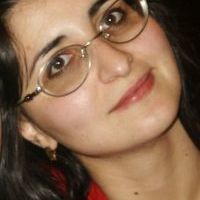


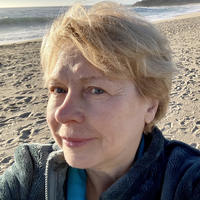
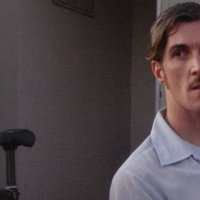
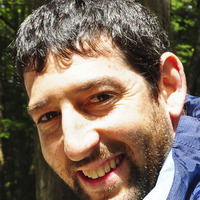


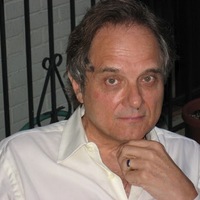
Uploads
Papers by Craig San Roque